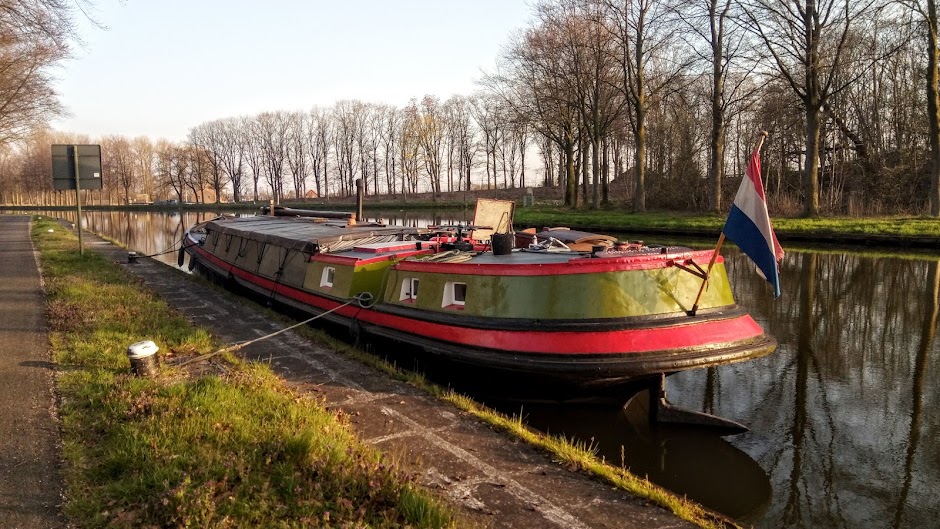Their narrowboat, generally referred to simply as Snail, was moored at Pommeroeul which is a lovely village in the far south of Belgium. However, as is often the case, the canal is a good stretch from the village itself and the Snail was moored at the junction between the busy and much used Canal Nimy Blaton-Peronnes and the Canal Hensies-Pommeroeul, which is no longer accessible to boaters owing to serious silting at the French border through which it passes (a long story for perhaps another post). As a result, there is a large lock at the junction with the canal from Blaton to Peronnes that is no longer in use.
 |
| Canal junction with the lock being the thin blue line between the two basins |
It is a lovely spot, even when the weather is bad (as it was today). I have been there a couple of times before but hadn't matched the name to the place until I arrived. There is a wide basin just before the lock and the sense of space and even solitude is marvellous (see aerial photo here). I'd had what might be called an 'interesting' drive down given that I got lost three times on route and endured Sindy shouting at me every time I slowed down to find out where I was. Added to that, it poured with rain for most of the journey, and I was an hour and a half later than I said I'd be. As a result, my sense of humour had taken quite a hammering by the time I pulled up next to the jetty. Even so, it was lovely to step out of the car (in the drizzle) and breathe in the fresh (damp) air and take in the space and tranquillity of the place again. It was also wonderful to see Anne and Oll again and we spent some good catch-up hours together.
But there is one thing about the lock at Pommeroeul makes it particularly special. In fact, it empitomises what makes Belgium, and particularly Wallonia, such a fascinating country. This écluse hasn't been used for twenty years, yet it is still manned and the lock keeper is there in his office on a daily basis. About the only work he has to do as far as operating the lock itself goes is to open the gates occasionally to let a boat in so the crew can fill up with water; other than this, he has no other locking duties to perform. Twenty years. To have a job that is no job. Almost unbelievable isn't it?
 |
| The rather grand and business-like lock keepers office |
 |
| The lock from the end closest to the Blaton-Peronnes Canal |
When I heard this I could only shake my head in wonder and laugh. Belgium is always full of surprises. It is the home of surrealism and somehow this disused, but permanently manned lock sums it up for me.
There is something very gallic about it too - and it reminds me in a way of the automated locks in France that don't operate at lunchtime (true). A quirk that fits in well with the French reputation for their love of lunch.
But this is even more mystifying. Perhaps it is because the Belgians take the quirks just one step further, and the Wallonians, (being French-speaking) go another step beyond that too. So what can I say except what my title says? Where else could this happen? Nowhere else of course. Only in Wallonia.










